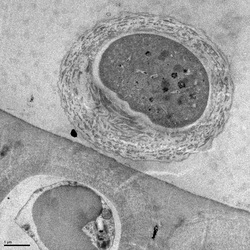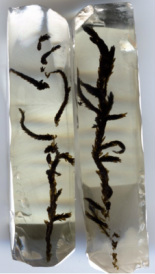María Arróniz-Crespo

In 2010 Zoë Lindo and Andrew Gonzalez described a new concept that changed the way we see bryophytes (mosses and related plants). They defined ´the bryosphere´ as a system formed by the living and dead parts of the moss tissue and the diverse community of microorganisms and invertebrates that inhabit the moss: different components that are connected and interact in a complex way. Zoë and Andrew invited us to change the scale on which we observed mosses to understand their role on ecosystems. This post is about the extraordinary journey of the inhabitants of the boreal forest bryosphere in the attempt to understand how this diverse community interacts in terms of N cycling.

The trip started last summer in Arjeplog, north Sweden, and will finish this autumn in Perth, Western Australia, where samples of the boreal forest bryosphere will be observed under a NanoSIMS: a secondary ion mass spectrometer that works at nanoscale thereby giving the possibility to direct visualization of nutrient flow within cell structures at submicron length scales! Preparation of the samples for NanoSIMS observation was challenging, but thanks to the inestimable help of Jeff Duckett and Silvia Pressel we found a fixation and embedding method that gave good staining of the microbial community, and also preserved the soft tissue of Pleurozium schreberi. The moss and its crew (cynobacteria, heterotrophic bacteria, fungi and unicellular algae) flew from the understory of the boreal forest to Bangor (SENRGY, Wales) and then to Madrid (Servicio de Microscopía Electrónica, ICA-CSIC, Spain) where samples were prepared. Sample preparation was a craft, resulting in wonderful “moss jewellery”! From Madrid, the boreal micronauts crossed Europe again to land in Aberystwyth (Advanced Microscopy and Bioimaging, Wales) where we spent weeks localizing and observing the association between the moss and its widely diverse epiphytic community in great detail using electron microscopy. From Aberystwyth, the crew started its last flight towards the antipodes. In Perth (School of Earth & Environment, UWA) this autumn, we will be able to complete what we already know about the fate of the fixed N within the boreal bryosphere and, therefore, to improve our understanding of the pathways that the N follows once it’s fixed by the cyanobacteria. It´s been a very exciting and wonderful trip; thanks to all for your interest and great contributions!
 RSS Feed
RSS Feed